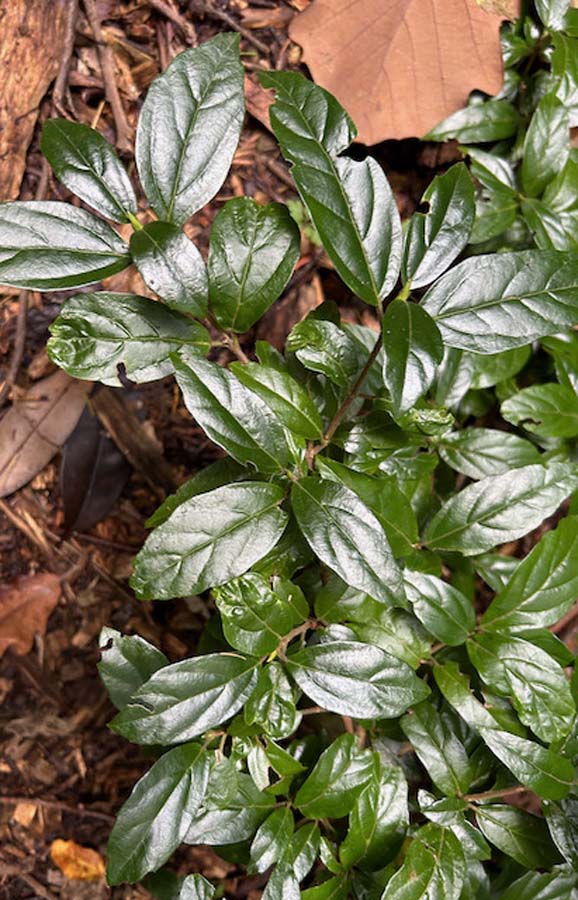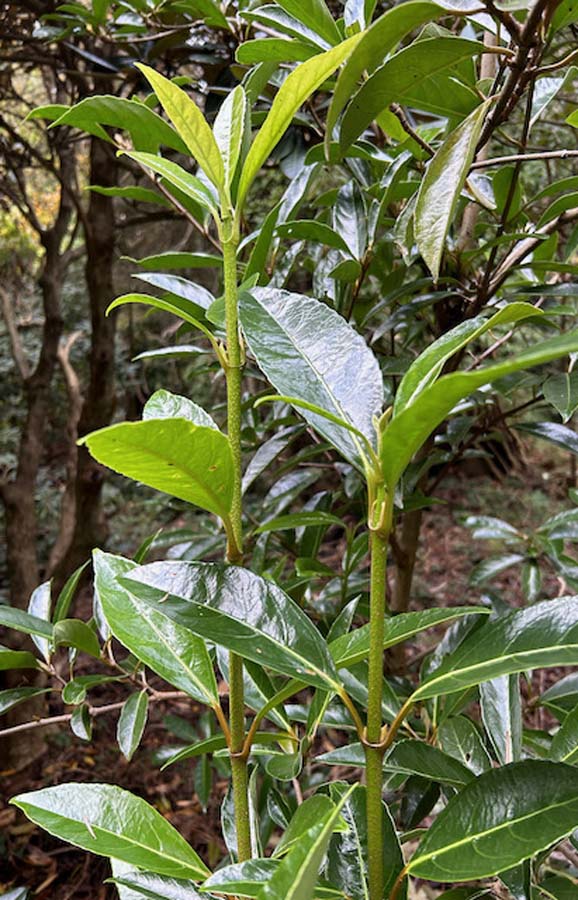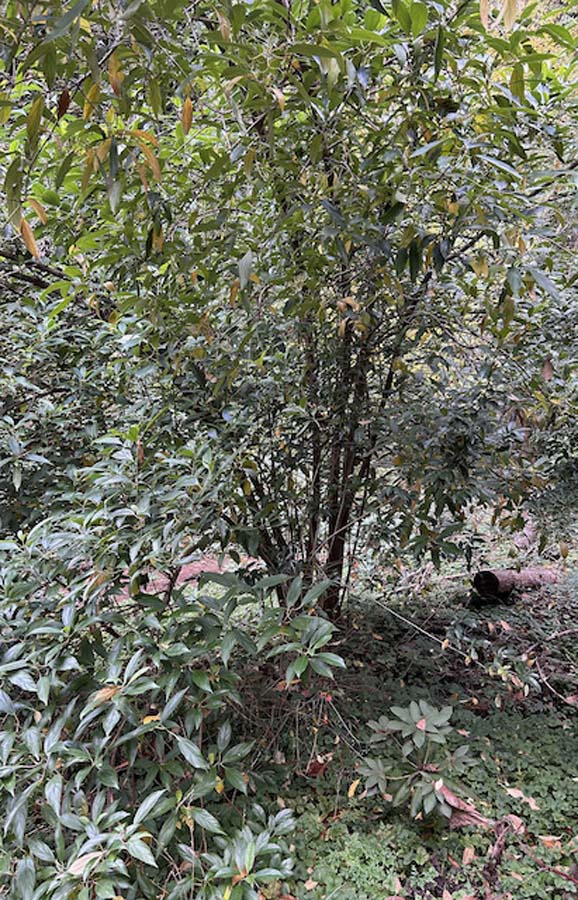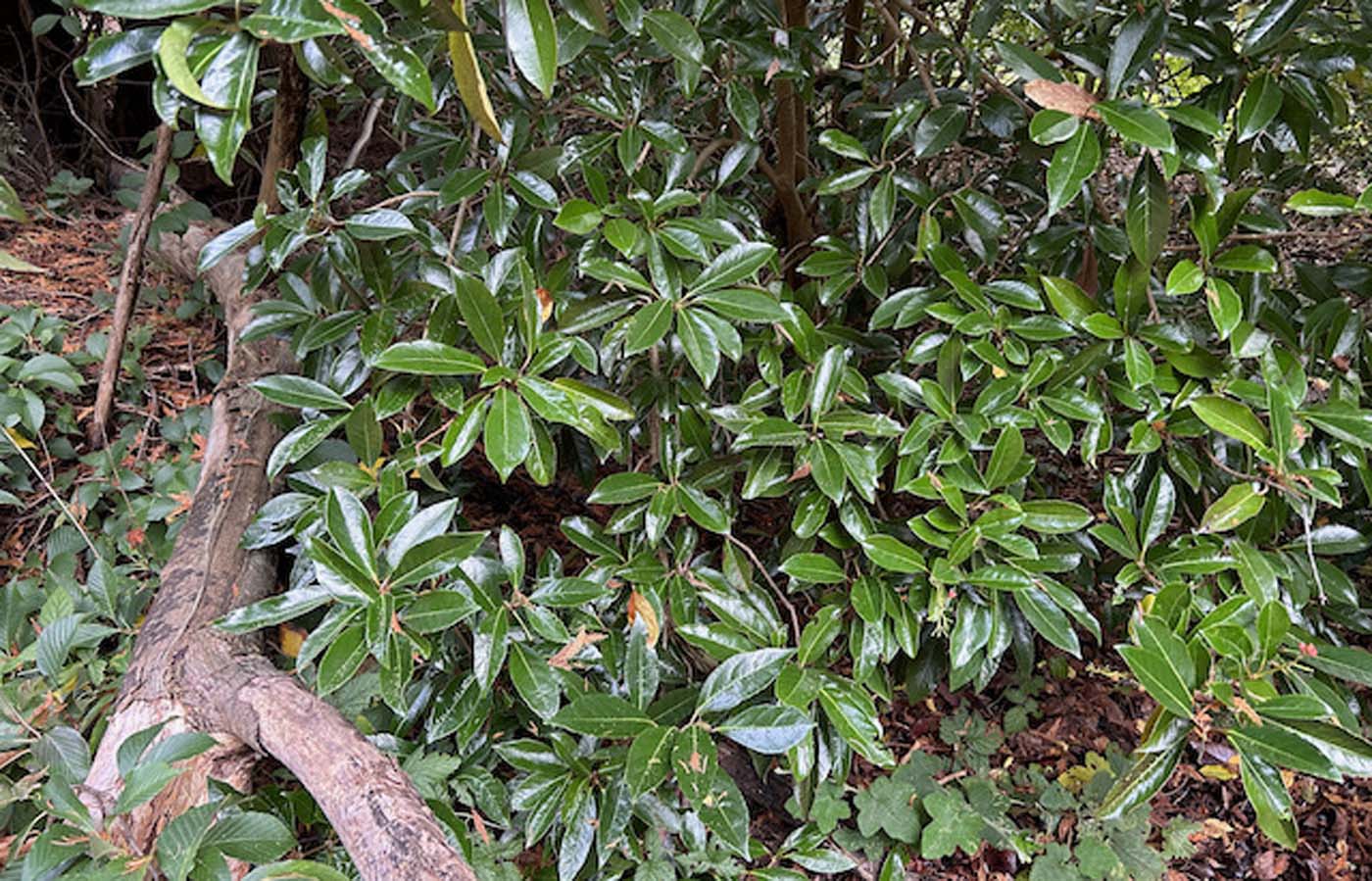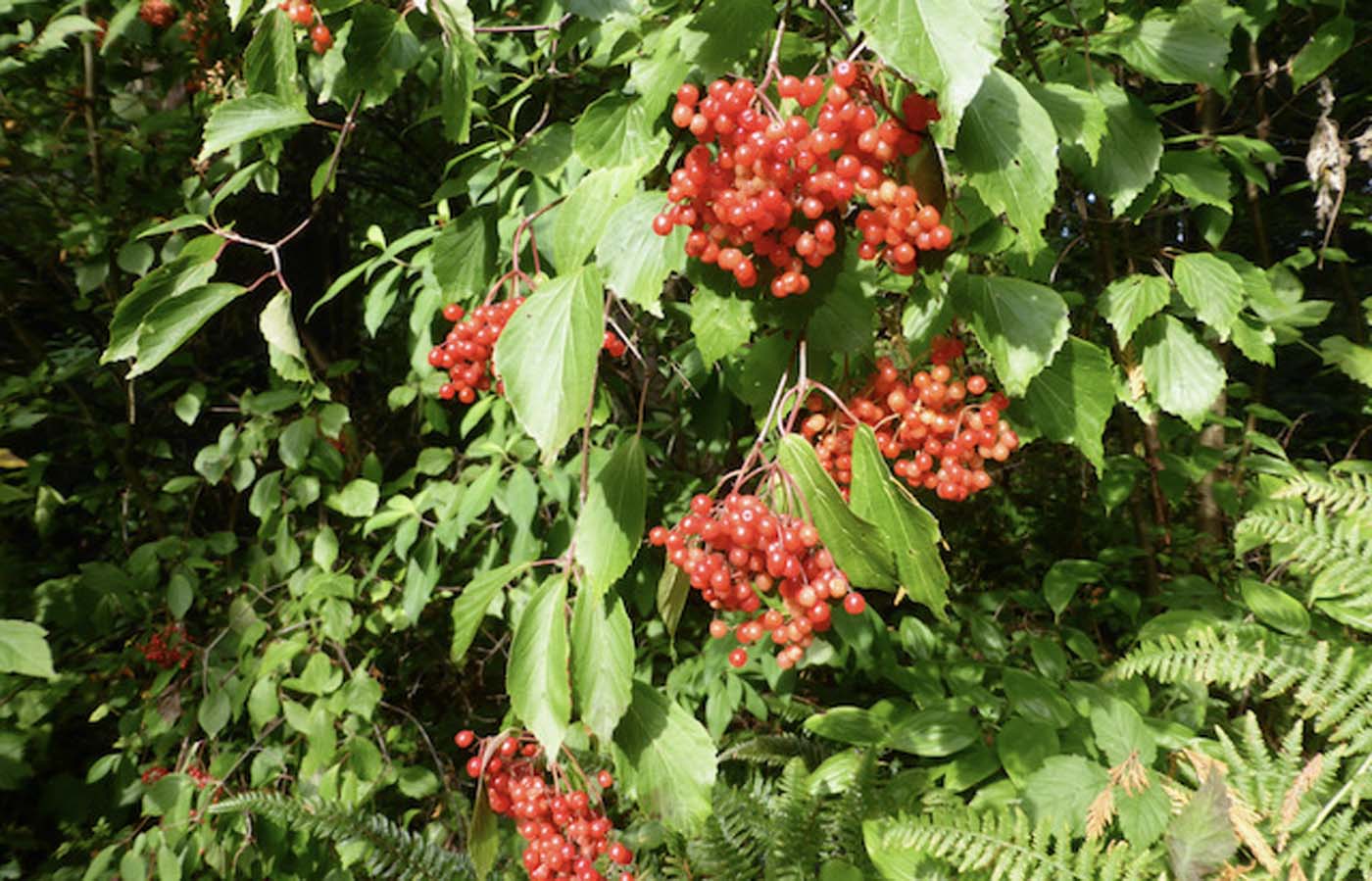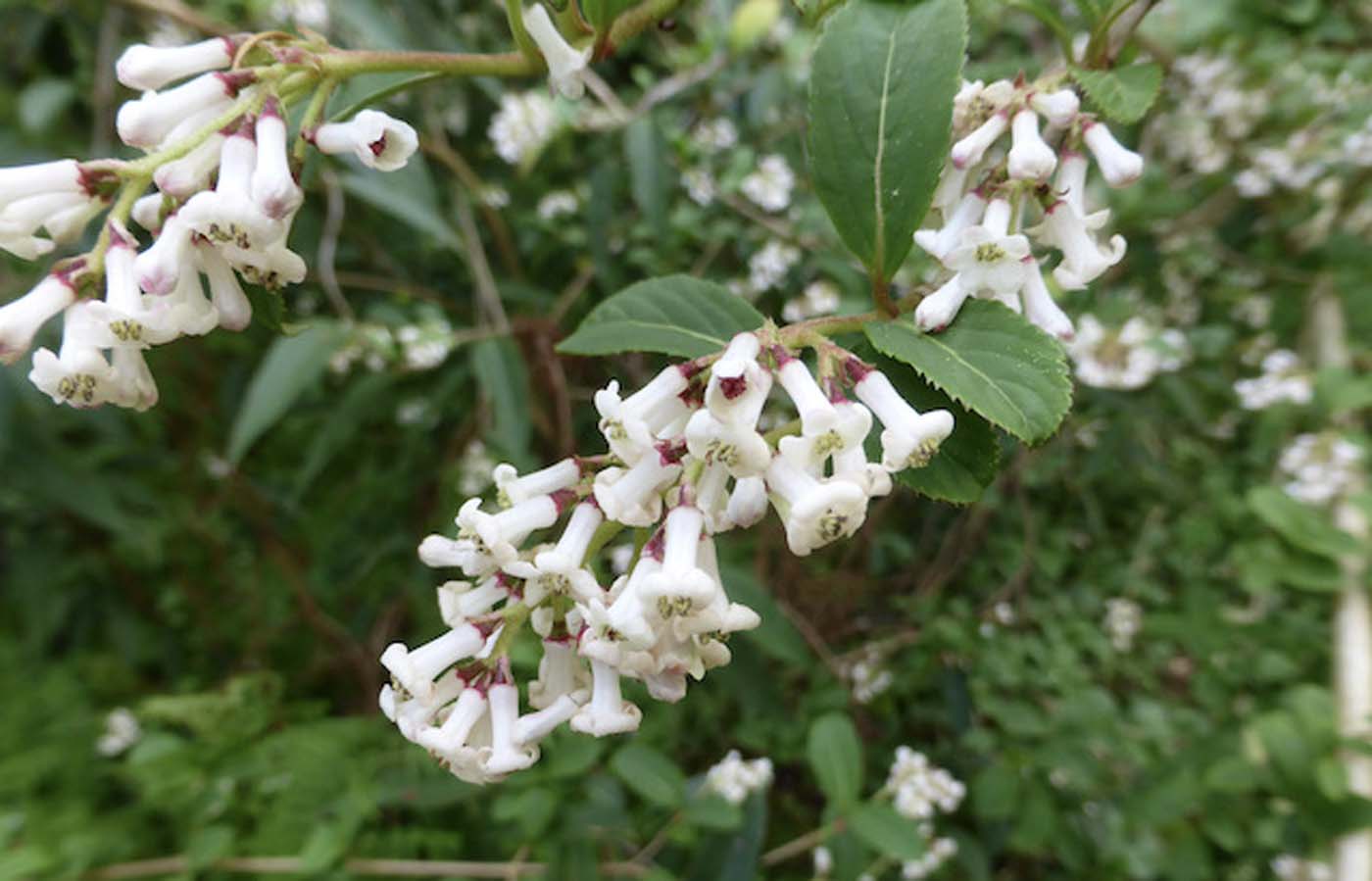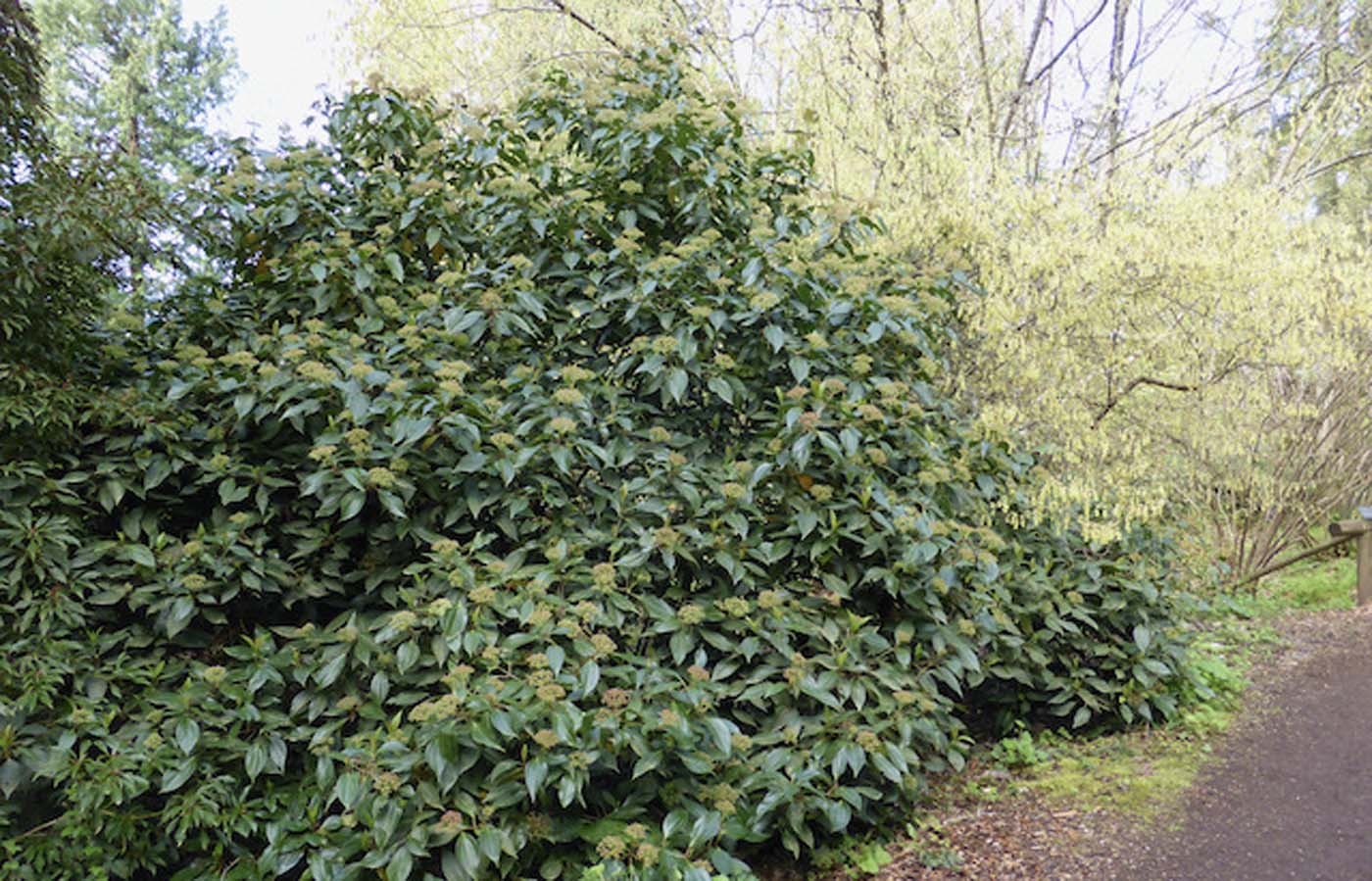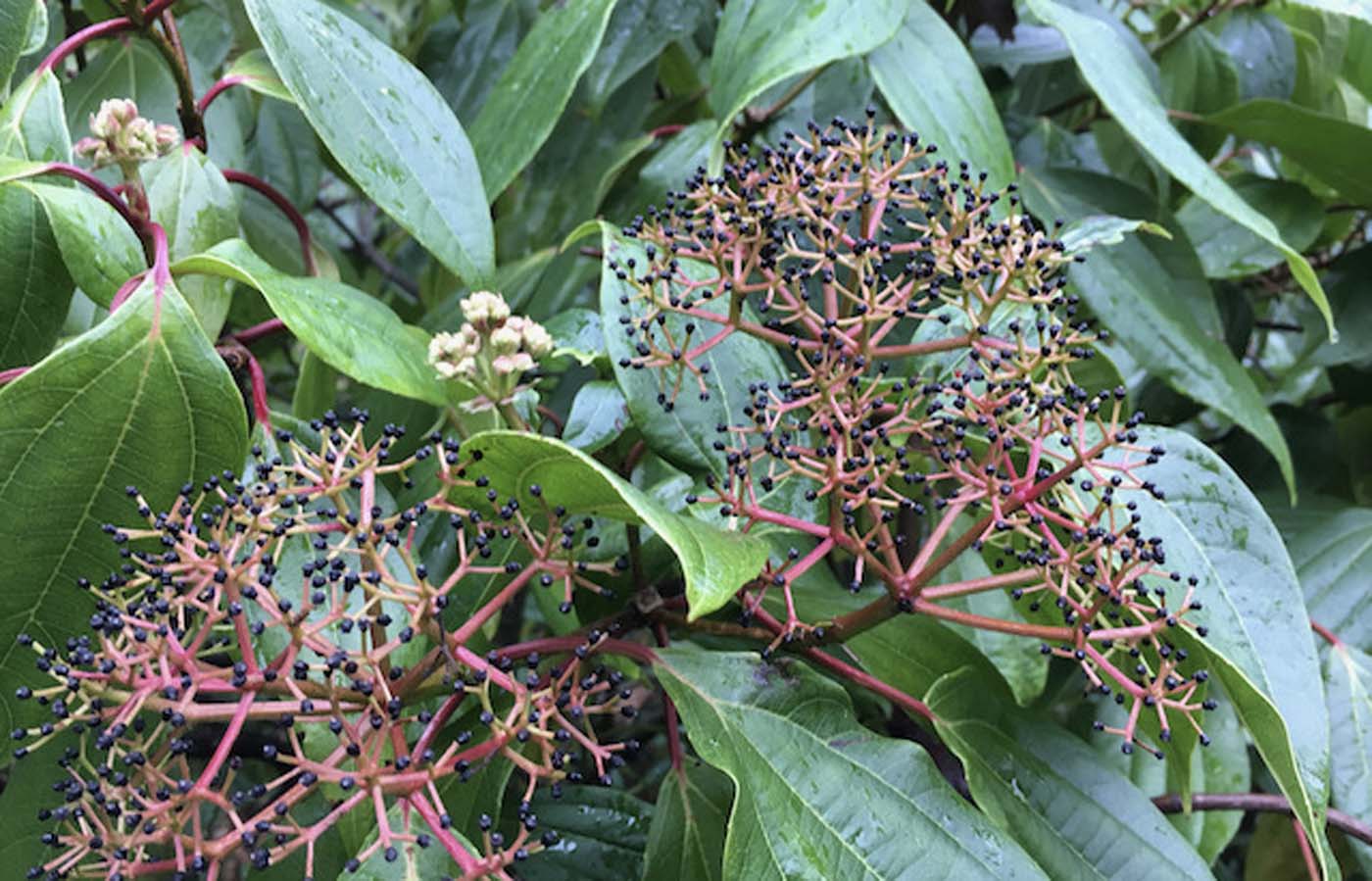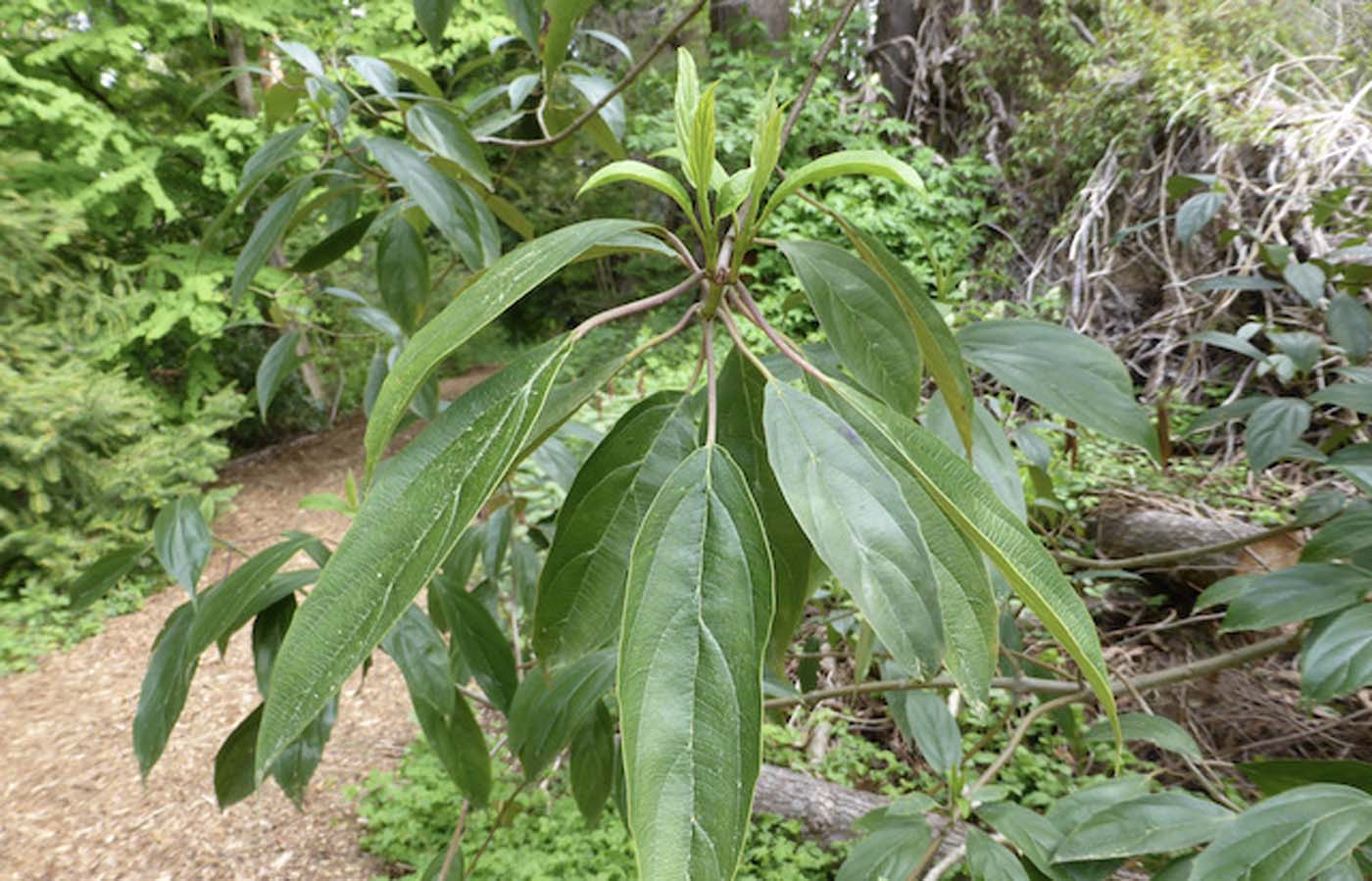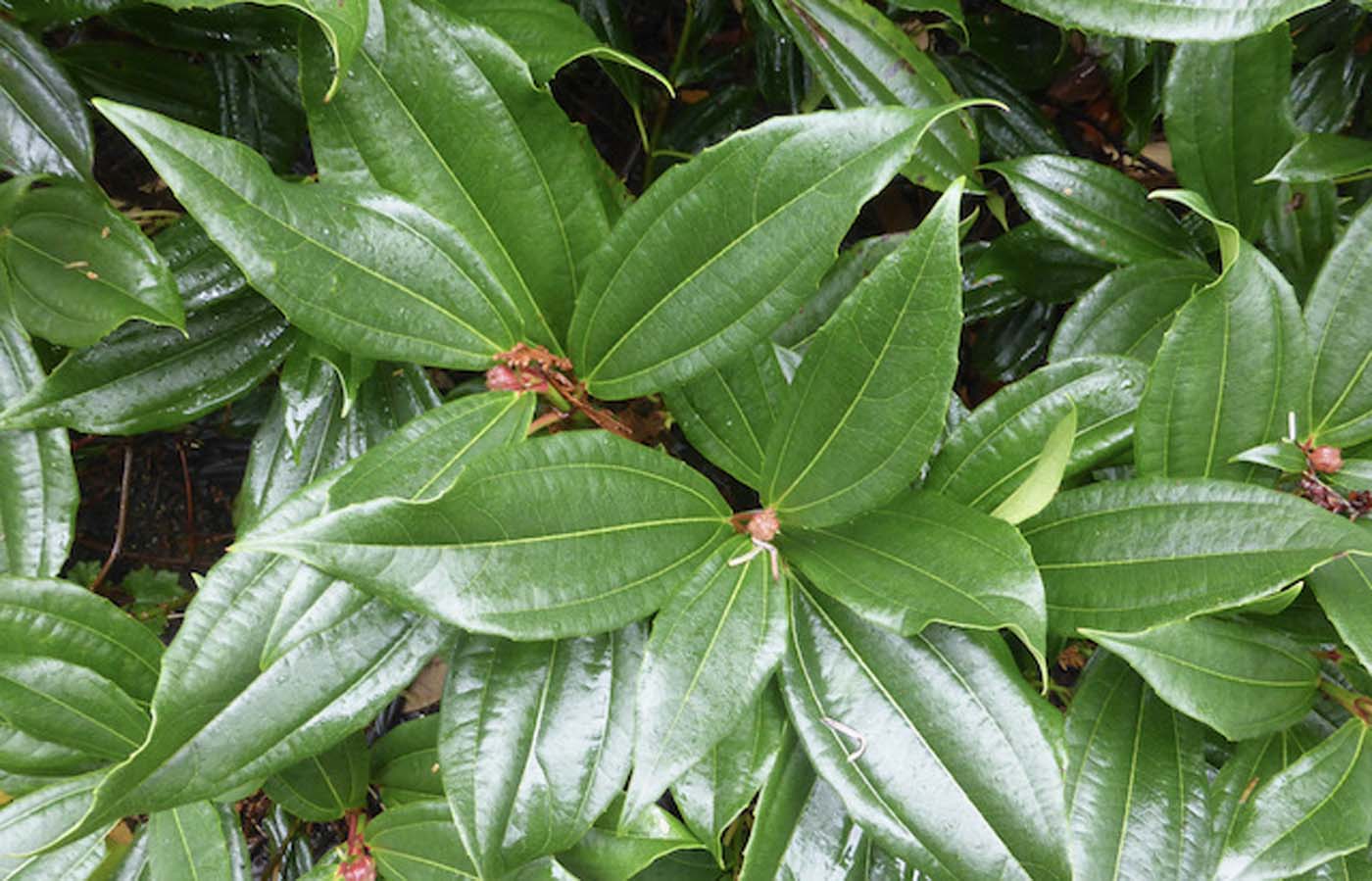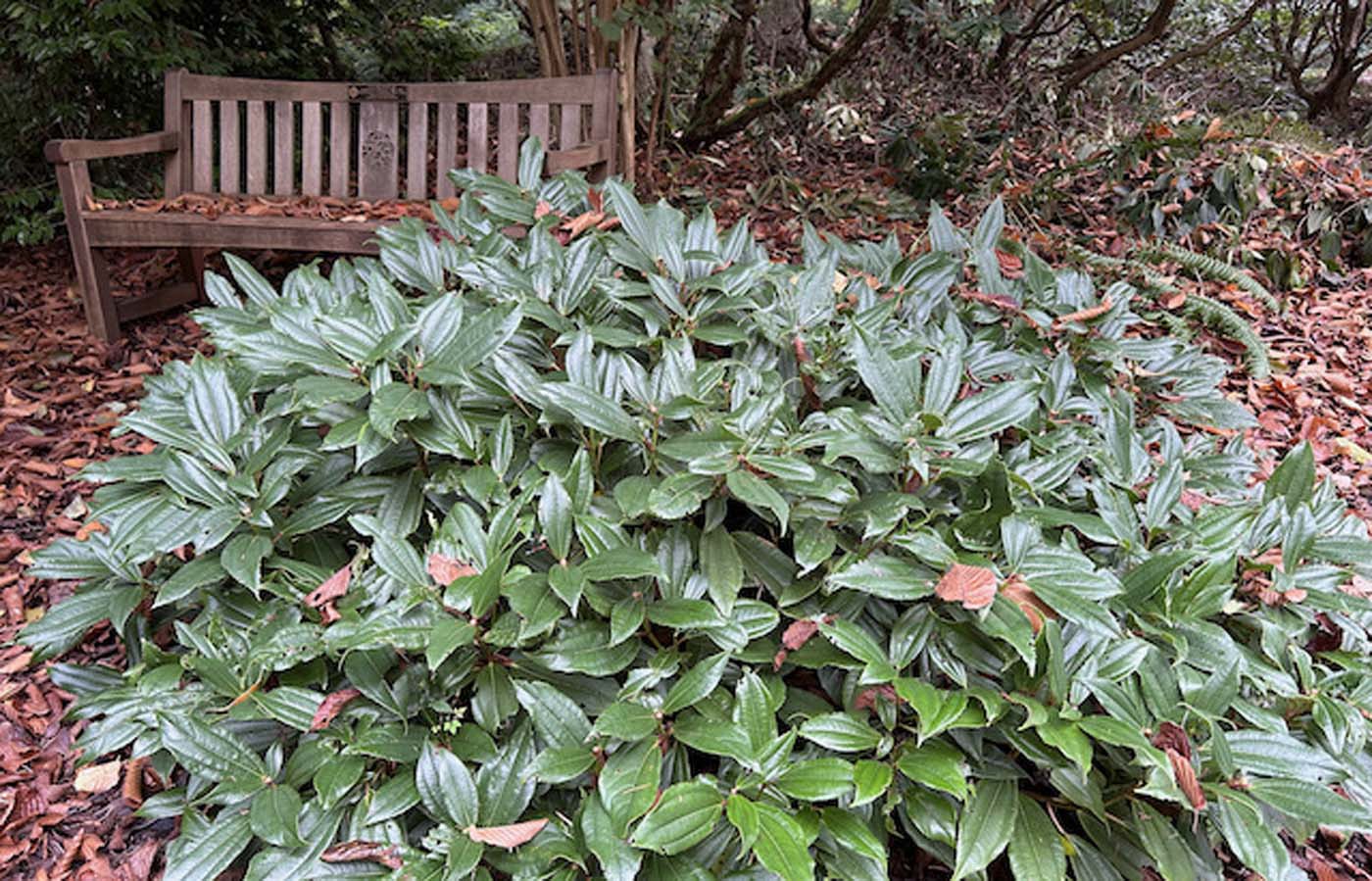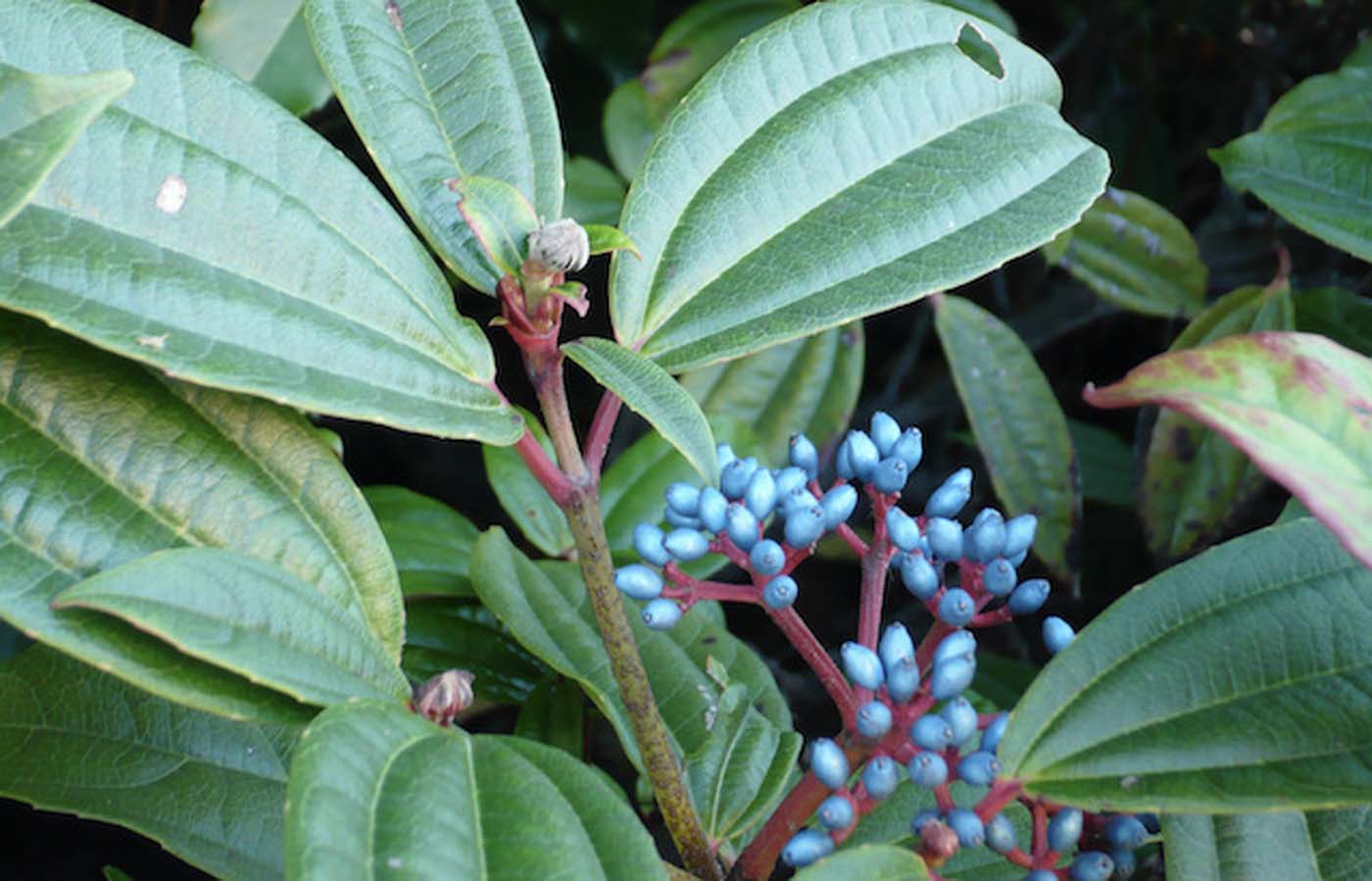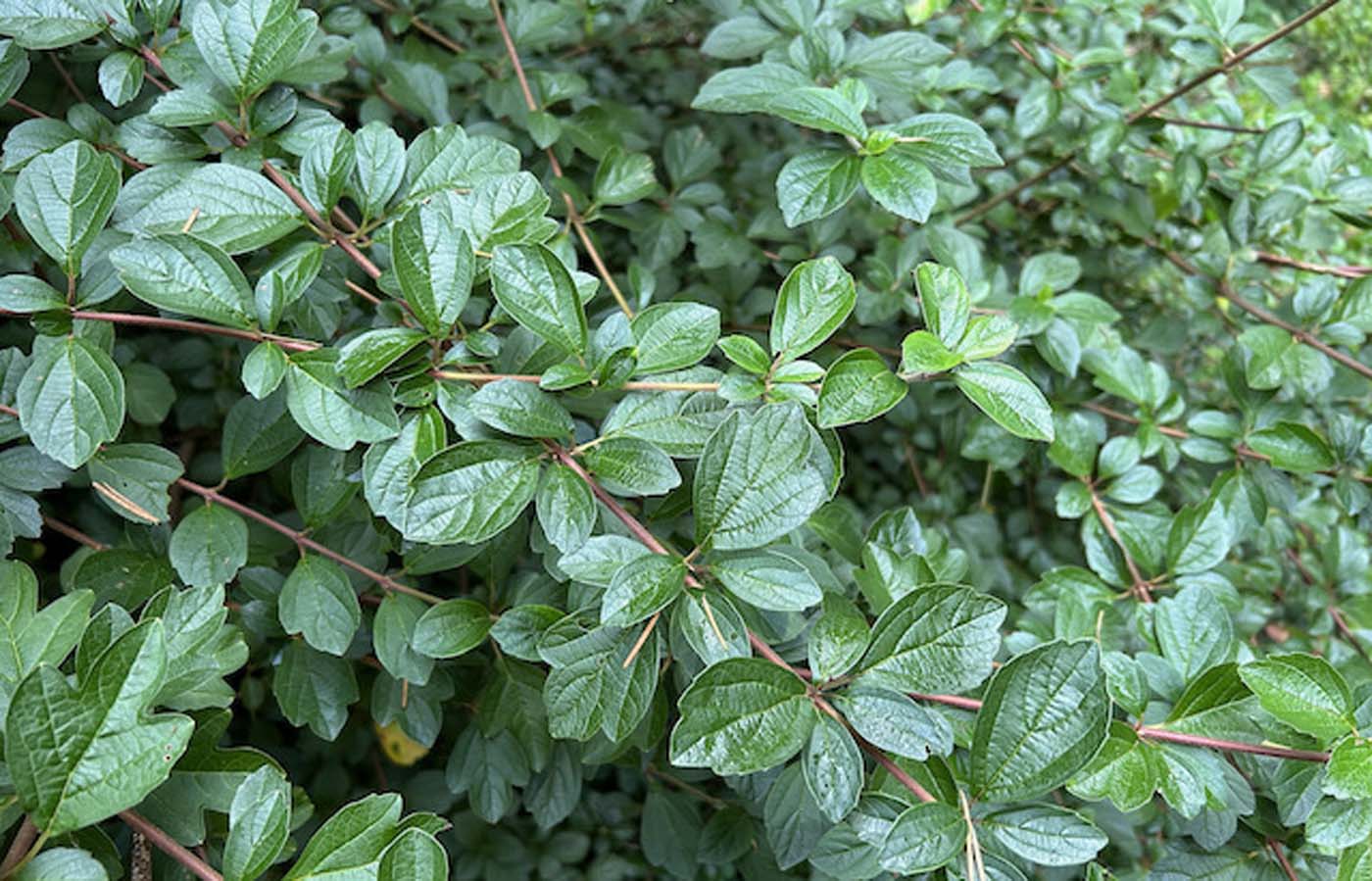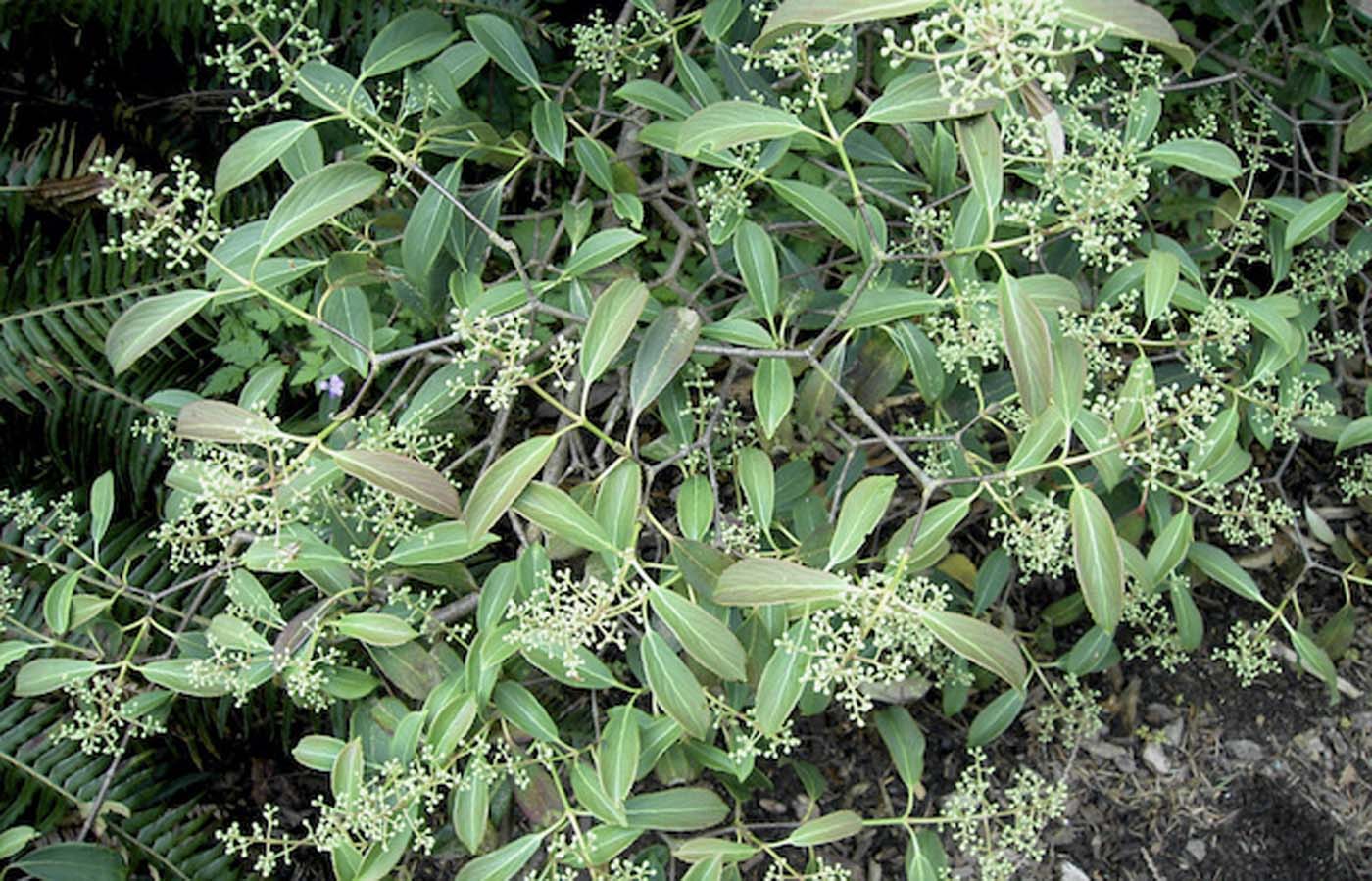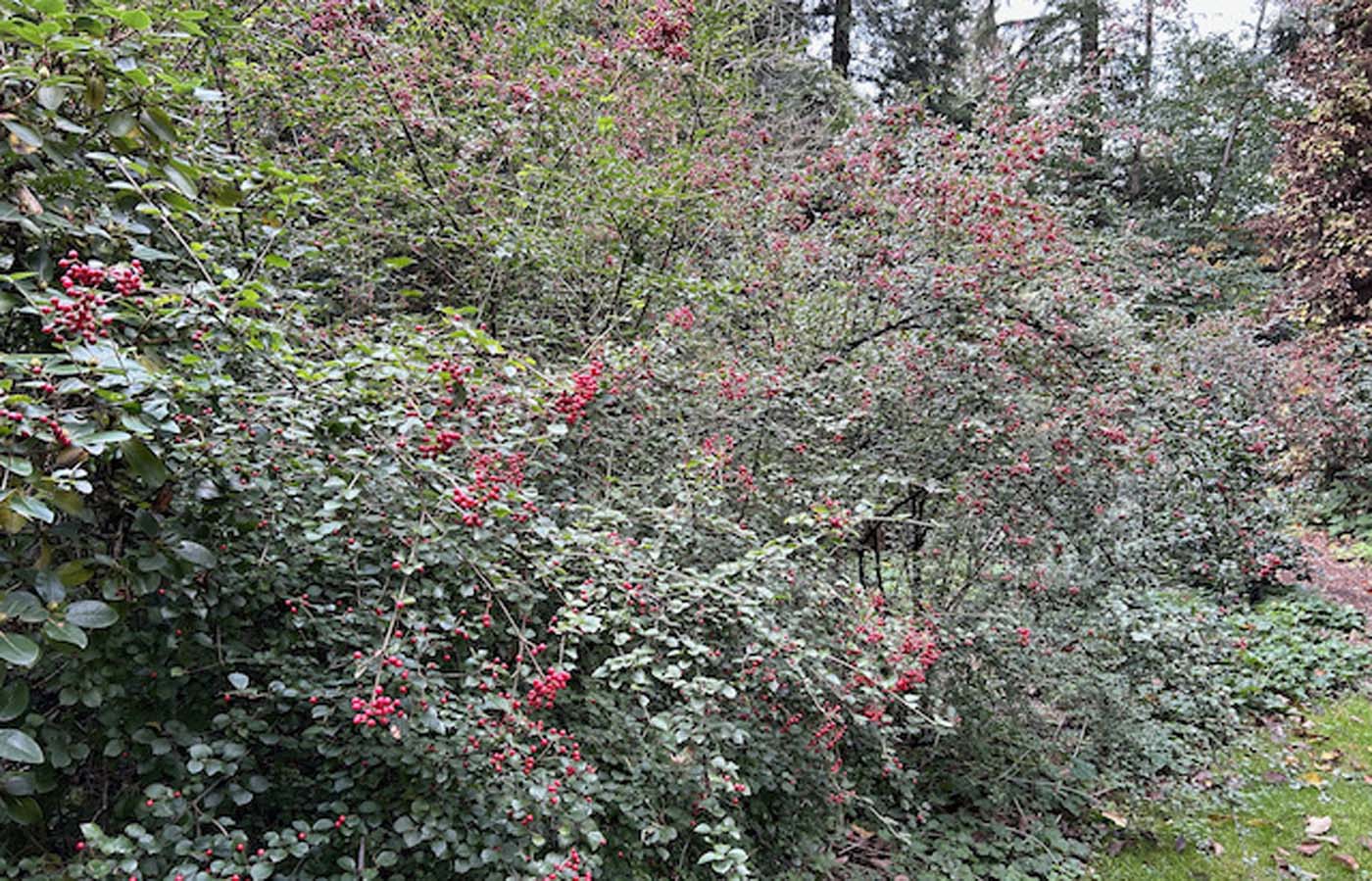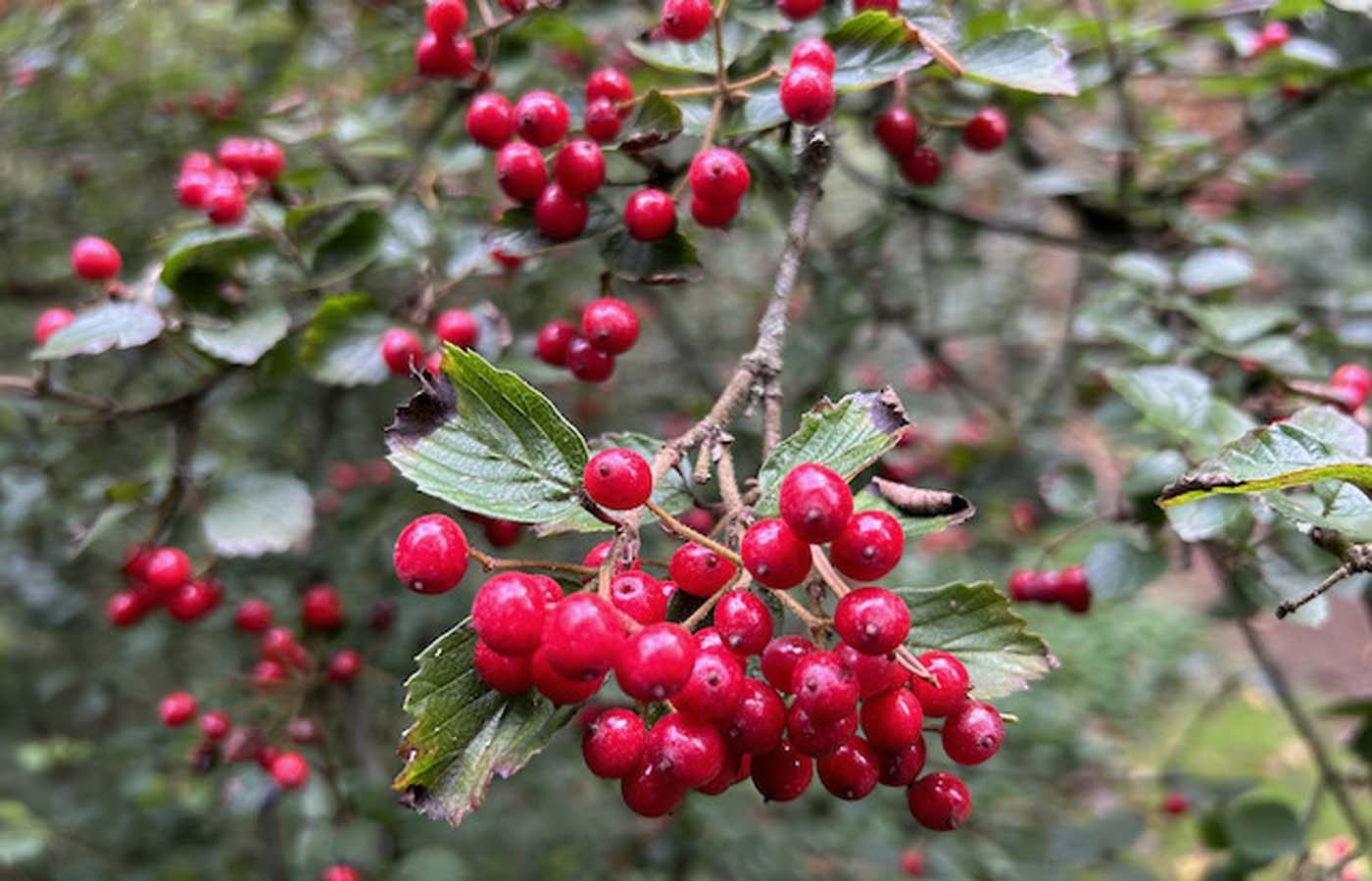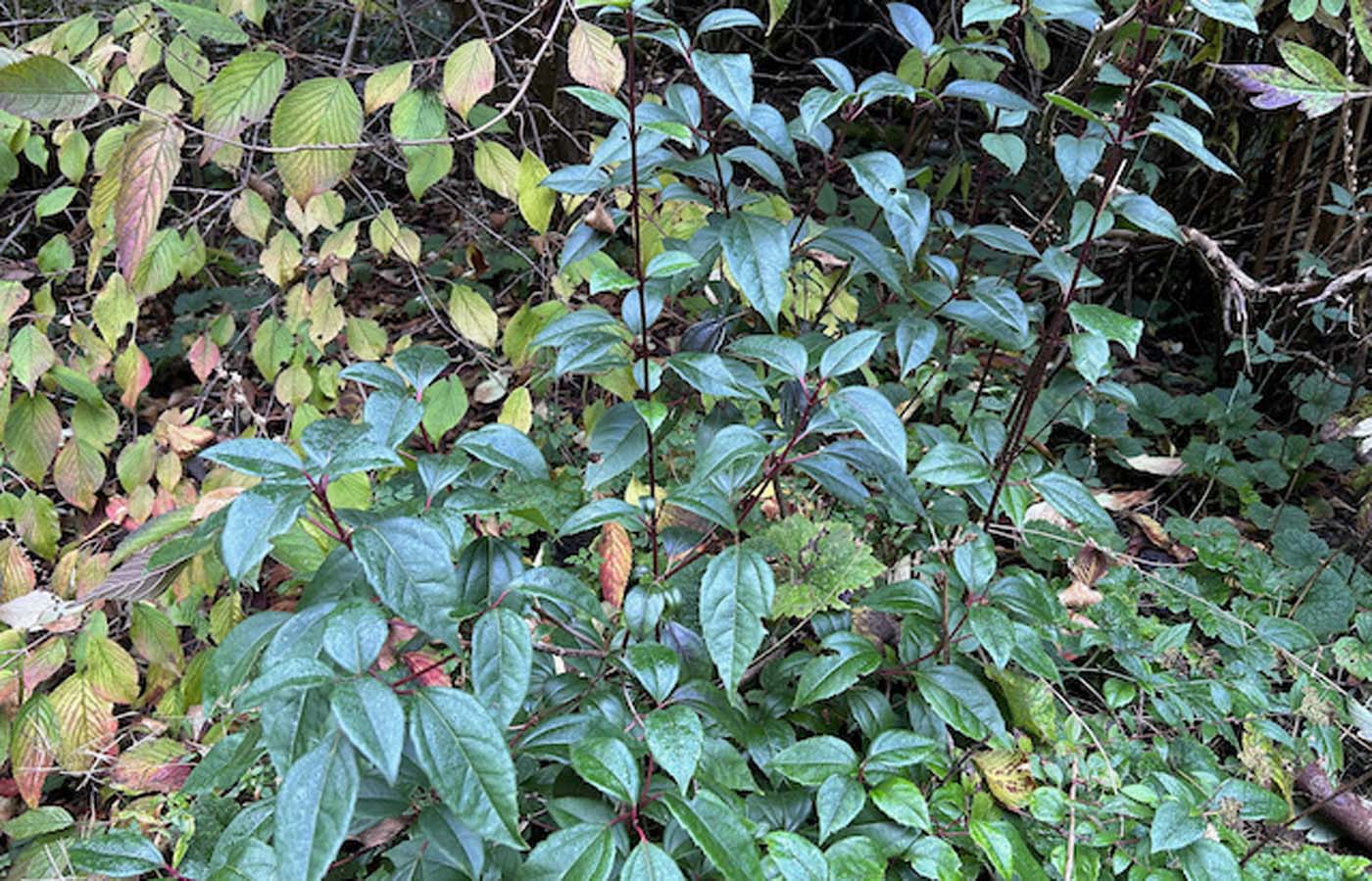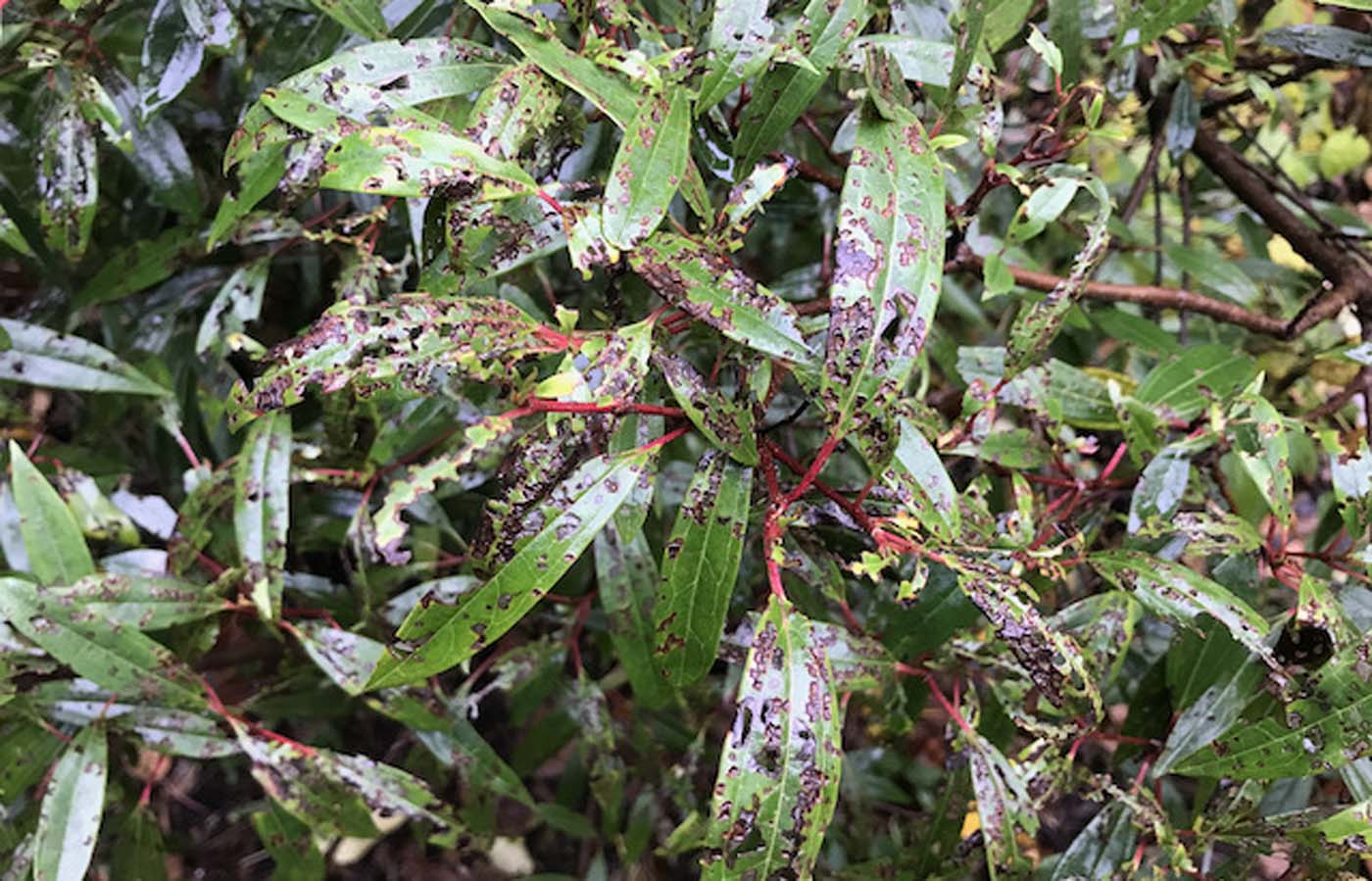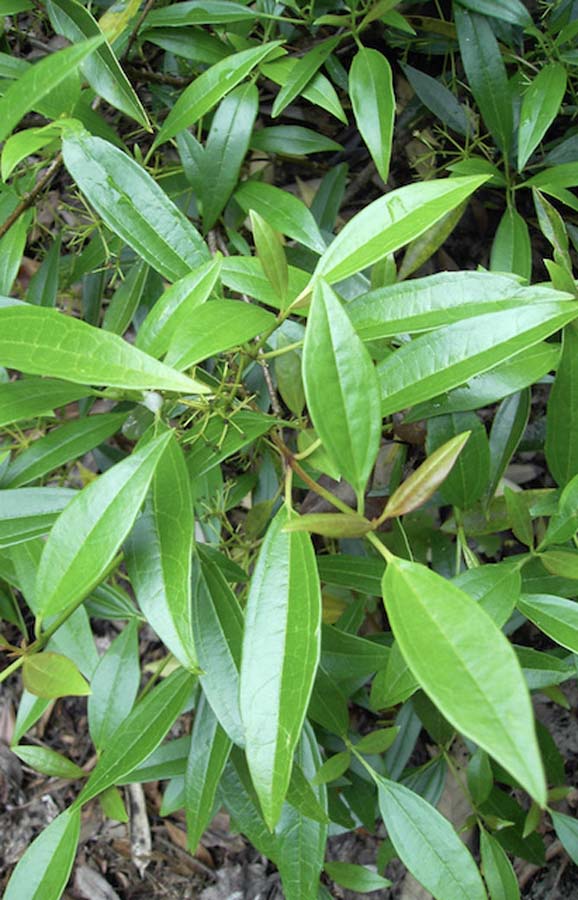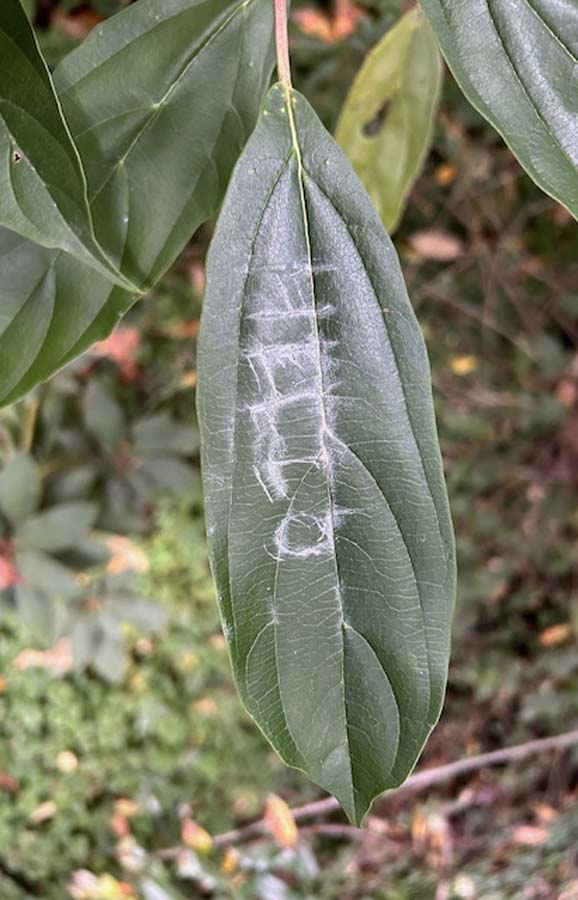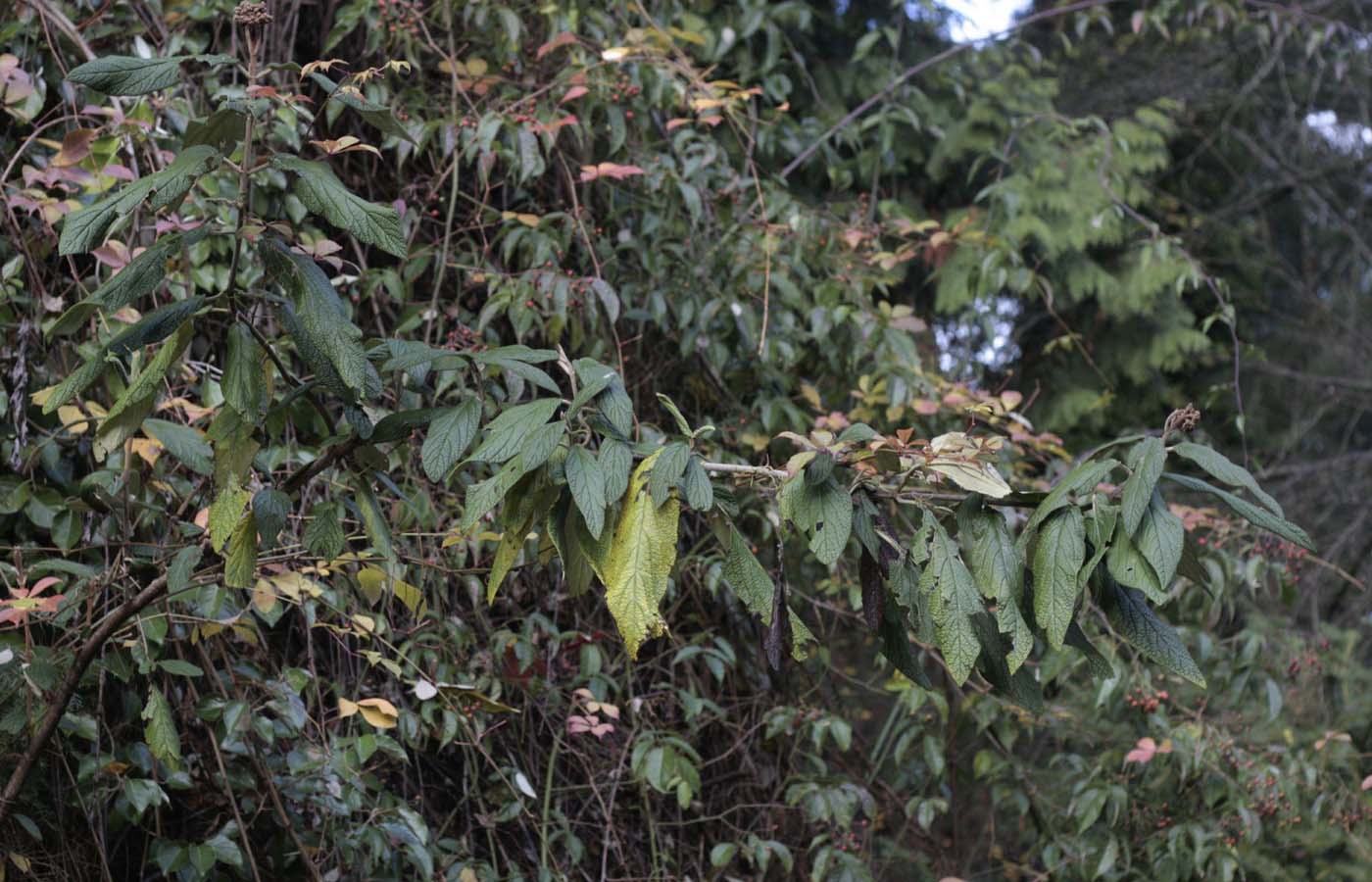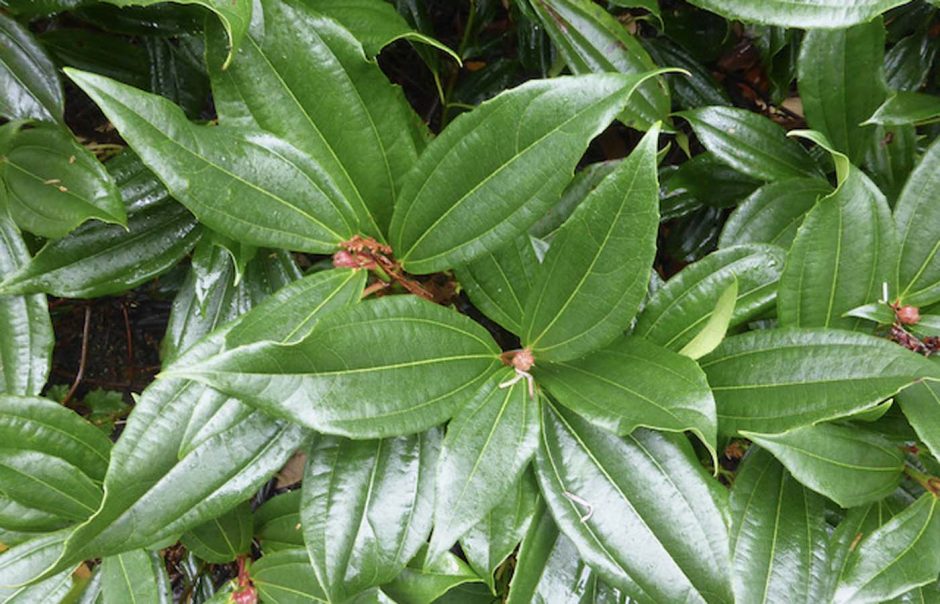
Viburnum davidii
A wide variety of broad-leaved evergreen plants flourish in our maritime climate. Foremost among the broadleaf collections at UBC Botanical Garden are rhododendrons. The rhododendron family, Ericaceae, is rich with evergreens, and is especially important to us—rhododendrons are the Garden’s most numerous and horticulturally significant collection—but the family also includes Gaultheria (salal relatives) and Vaccinium (blueberries). Several other groups of broad-leaved evergreens are represented in the Garden: for example, the berberidads (i.e., Berberis, Mahonia and Epimedium), Cotoneaster, hollies (Ilex) and sweet olives (Osmanthus), but after the ericads, viburnums are probably the most noteworthy and numerous in the collection.
Viburnum is a large genus, with over 150 species of deciduous and evergreen shrubs and trees, the majority originating in China. Many are grown for their fragrant flowers, but the evergreens are grown primarily for their beautiful foliage and berries. The largest evergreen viburnum in the garden is Viburnum rhytidophyllum, the leatherleaf viburnum, a species known for its vigorous upright growth and drooping, dark green, crinkly leaves to nearly 30 cm long. This viburnum is often more attractive at some distance, as at close range, it easily overwhelms the viewer with its crowded, multiple stems (to six or seven meters tall) and coarse texture. Early in the year, masses of tiny, creamy white flowers are borne in terminal, flat-topped clusters. These may be followed by red berries, which soon turn black. Leatherleaf viburnum looks attractive with other large evergreens, such as big-leaf rhododendrons, and can be seen in this complementary association in numerous places along the western edge of the David C. Lam Asian Garden.
A somewhat better-behaved shrub of similar stature is Viburnum cylindricum. The species is sometimes grown in gardens as a curiosity since its dull, oblong leaves are covered with a thin waxy material that is easily inscribed with any sharpened object to produce a permanent decoration (this, and other horticultural vandalism is, of course, frowned upon). Viburnum cylindricum is often considered somewhat tender locally and rarely grown for that reason. However, our specimen on Delavay Trail next to Kingdon Ward Way, which was grown from seed wild collected in Sichuan, is not only handsome but perfectly hardy. Close by, on Kingdon Ward Way is Viburnum foetidum, the “stinking viburnum.” The neat, glossy leaves and arching stems of this species make for a particularly attractive display, and while the name might scare people away, we haven’t detected odours of any sort emanating from this plant, foetid or otherwise. Viburnum sieboldii, a deciduous, arborescent (tree-like) species—on Ludlow Trail just north of Lower Asian Way, but now long deciduous and stripped of its spectacular fruits—gets my vote for the rankest-smelling viburnum. Two other deciduous species are worthy of a November mention. Viburnum betulifolium (birch-leaf viburnum) is a large suckering shrub with tall arching branches and birch-like leaves. It is unusual both for its spectacularly magnificent drooping clusters of scarlet berries and the fact that birds leave them alone for so long into the autumn. The specimens on Sargent Trail, and on Upper Asian Way west of Fang Trail are both impressive. The Taiwanese Viburnum parvifolium (small-leaf viburnum) (Wilson Glade) is similarly spectacular in fruit, but considerably bushier than its birch-leaf relative. Visitors may or may not see these two species in November, depending on how hungry our avian friends might be.
Historically, the most commonly grown evergreen viburnum locally was the shrubby Viburnum davidii (David viburnum). The species has strongly–veined, dark, glossy green leaves on reddish stems; plants exhibit stunning, porcelain blue fruits when cross-pollinated. In the garden, we have plants from a variety of sources, and this ensures that we have at least some fruits produced. Viburnum cinnamomifolium (cinnamon-leaf viburnum) is an exquisite large shrub or small tree, closely related to V. davidii, with ribbed leaves nearly identical to those of its smaller cousin, but larger and smoother, and with smaller, blue-black berries. There are several plants in the Garden. Look for individuals on Lower Asian Way at the west end of Flanagan Trail and immediately west of the Ting.
Near the Moon Gate are examples of the curiously-named Viburnum propinquum (propinquus is Latin for “close to”—but close to what?), a widespread evergreen Asian species with attractively pointed leaves, layered branching and compact, flattened clusters of flowers that are followed by small black fruits. Unfortunately, our first-established plants were routinely targeted by the viburnum beetle, a particularly destructive pest that mostly attacks deciduous viburnums. Thankfully, more recent planting does not seem bothered. A closely related species, Viburnum atrocyaneum (Flanagan Trail near Kingdon Ward Way) produces more rounded leaves and rounded clusters of small white flowers, and that, at least in its native habitat (the mountains of northern Myanmar), produces dark, pewter-blue fruits. Also on Kingdon Ward Way, Viburnum chingii, a large, wide-spreading shrub from southwestern China and Myanmar, has small red-edged green leaves. It reliably produces small, red-turning black fruits after its deliciously fragrant, early-summer-borne flowers. One of the most unusual evergreen viburnums in the Garden is the gangly, but oddly handsome Viburnum henryi (Henry viburnum)—an uncommon species noted for its divaricating (wide-spreading) branches, narrow leaves and red-turning-black, lozenge-shaped fruits. Especially in warmer climates the species eventually takes on an arborescent habit, but in ours, Henry viburnum is stubbornly sprawling. There is a large specimen at Upper Asian Way and Kingdon Ward Way and another nearby on Henry Trail just east of Kingdon Ward Way.
- Viburnum atrocyaneum
- Viburnum awabukii ‘Chindo’
- Viburnum cylindricum
- Viburnum awabukii ‘Chindo’
- Viburnum betulifolium
- Viburnum chingii
- Viburnum cinnamomifolium
- Viburnum cinnamomifolium
- Viburnum cylindricum
- Viburnum davidii
- Viburnum davidii
- Viburnum davidii
- Viburnum foetidum
- Viburnum henryi
- Viburnum parvifolium
- Viburnum parvifolium
- Viburnum propinquum
- Viburnum propinquum
- Viburnum propinquum
- Viburnum cylindricum
- Viburnum rhytidophyllum
Submitted by: Douglas Justice, Associate Director, Horticulture and Collections

